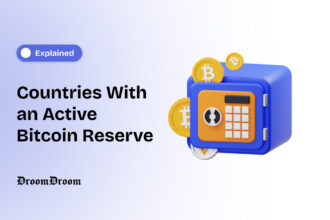Discover the exciting realm of NFTs, wherein art meets blockchains. Have you heard the phrase “floor price” when you’re in the world of NFT? A “floor price” doesn’t mean a place where you can stand, but its significance has a huge influence on the NFT market. This brings us to what an NFT floor means.
- NFT Floor Price Explained
- What is an NFT Floor Sweep?
- How Is NFT Floor Price Calculated?
- What Influences NFT Floor Prices?
- Scarcity and Rarity
- Creator Reputation
- Community Engagement
- Utility and Use Cases
- Market Trends
- Artistic Quality and Innovation
- External Influences
- Marketplace Dynamics
- How to Protect Yourself From An NFT Floor Price Manipulation
- Research Thoroughly
- Community Engagement
- Verify Transactions
- Beware of Pump and Dump Schemes
- Diversify Your Portfolio
- Use Reputable Platforms
- Set Realistic Expectations
- Advantages of NFT Floor Price
- Quick Market Assessment
- Price Discovery
- Market Trends and Sentiment
- Strategy for Collectors
- Comparison Across Collections
- Community Engagement
- Marketplace Efficiency
- Predictability
- Conclusion
The price floor is like a benchmark—the minimum amount buyers can pay for a specific line or series of NFTs. It’s almost like the first bid in an auction or a ticket into the exclusive club of digitally owning something. A good understanding of the floor price can help you interpret the broader market trends, determine its worth, and perhaps take a dive into the lively world of the NFT trade.
NFT Floor Price Explained
The floor price is, so to speak, the lowest possible price that one can pay for a particular digital collectible in the field of NFTs. Imagine it as a thrift shop for expensive clothes with surprising steals. The lowest price that anyone can list or ask for in any NFT collection or category is called this price floor.
Why does it matter? So, the floor price is the first sign that indicates how the investors feel about a certain NFT collection. For example, if the floor price is increasing, this might mean higher demand or that the art market is coming to perceive its value differently. However, the falling price of the floor may also mean losing interest in the goods or having too many available.
These trends should be watched closely when navigating the NFT landscape. Just like taking the heart rate (pulse) of the trading, one would know what digital assets are being traded extensively or which are losing favor among traders. The floor is always under scrutiny by investors, collectors, and lovers of non-fungible tokens who are keen to buy, sell, or simply admire the ever-changing non-fungible token marketplace.
If you are a crypto newbie, here is a detailed guide to creating NFTs and how to sell them.
Therefore, the next time you visit NFT marketplaces, make sure you keep an eye on the floor price, as it may reveal a lot about a specific NFT project’s projection and long-term outlook.
What is an NFT Floor Sweep?
When doing a floor sweep, one seeks several NFTs at or around their floor prices in a particular collection. It’s like spring cleaning to clear up the ‘bargain basement’ of an imaginary shop selling works of art.
That’s what an NFT sweep is about—basically, trying to catch some undervalued gems in a collection. The purpose is to buy NFTs slightly above their floor price to diversify portfolios and look for any further conceivable hidden values that can later be appreciated. It’s an amalgamation of suspicion, strategy, and a pinch of digital fun.
On the other hand, like any investment strategy, there is risk. The market dynamics could make valuation increases for all the NFTs very unpredictable, meaning not every NFT in a collection would experience a price surge. This calls for a deep awareness of the particular NFT collection, its community, and how it’s perceived in social media.
Therefore, look at a floor sweep as an online flea market, except you’re searching for the exclusive trinket that other people may not even notice. That’s an exciting trip for fans of risks and adventures in the NFT zone.
How Is NFT Floor Price Calculated?
Digital arithmetic combined with market dynamics is what is involved in calculating the NFT floor price. Here’s a simplified breakdown:
Lowest Listed Price
The lowest listed price of a certain NFT in a specific collection usually serves as the floor price. Rock-Bottom, also referred to as the lowest selling price, refers to how much a person would be willing to let go of their digital asset.
Marketplace Trends
It is more than one NFT; it is about the way markets behave. Therefore, when many NFTs in a series are regularly priced similarly, this becomes an observable trend that sets the base price.
NFTs have good marketplaces, you are recommended to this article if you would like to more on NFT marketplaces.
Buyers and Sellers
The mutual interaction between buyers and sellers has a bearing on the floor price. Increasing the floor price involves raising the amount buyers would be ready to pay for the NFT. On the contrary, if the sellers want to dispose of the NFTs quickly, this will bring down the floor price.
Supply and Demand
Classic economics come into play. When the demand for the specific collection is higher than its availability it becomes one of the key factors that affect the floor price. However, too many available similar NFTs can result in a lowered floor price.
Community Perceptions
It is important for a particular NFT collection to have good sentiment in the community. What may set a baseline for the floor price of NFTs within the community, can include positive buzz, several artist collaborations, or other external factors, etc.
The NFT universe changes very fast so be aware that the floor price fluctuates depending on the prevailing market mood. It is a combination of some analysis, and some market intuitions coupled with a pinch of uncertainty of the contemporary art market.
What Influences NFT Floor Prices?
The pricing of NFT floor prices is a series of moves by different issues generating vibrations and sounds in the digital artwork’s marketplace. Here are some key influencers:
Scarcity and Rarity
As is well-known concerning ancient art, this factor is essential. The floor price might also be influenced by the limited editions or rare traits in a collection that would attract more bidders driving the demand.
Creator Reputation
At times, a reputable artist’s name behind an NTF can lead to a substantial difference in its value. This is why famous artists sell their work at a higher premium and they also help define the floor price of other digital products.
Community Engagement
This involves how strong the community around a particular NFT collection is, and how much enthusiasm it comes with. With positive word of mouth from a vibrant and active community driving demand, this will help to set positive floor prices.
Utility and Use Cases
Some NFTs also hold some extra benefit or utility for example access to events, virtual room, or even real-world benefits. Tangible utility NFTs also enjoy a high floor price due to their ability to deliver in addition to digital ownership.
Market Trends
One cannot fail to appreciate the broad brush trends of the NFT market. Popularity of a certain type of NFT may cause an imitation phenomenon, and push up floor prices on similar collections.
Artistic Quality and Innovation
An NFT’s perceived value is determined by its high artistic standards and innovative elements. Some of these include unique and revolutionary designs, and interactive elements that may draw potential buyers and ultimately affect the floor price.
External Influences
Spikes in demand arise from events taking place in the real world as well as collaboration with other artists, brands, influencers, etc. Other external factors such as news coverage in popular media or endorsement by celebrities may also contribute.
Marketplace Dynamics
The floor price is also determined by the rules and features that guide the marketplace for buying and selling NFTs. Buyers’ behaviors may be influenced by features such as bidding mechanism, royalty payment in favor of creators, and user-friendly environment among others.
The fluctuating NFT floor price reflects a multilateral dance between art, society, and business. These influencers should be monitored because they may give insights into the workings of the digital art marketplace.
How to Protect Yourself From An NFT Floor Price Manipulation
It is wise to navigate some cleverness through the NFT space to evade the possibility of floor price manipulation. Here are some tips to help protect yourself:
Research Thoroughly
Knowledge is your best defense. Zoom into the NFT collection that you are attracted to. Know the artist and community, as well as the history behind the initial floor price. Background information may assist in detecting strange trends.
Community Engagement
Join the NFT community. Visit forums, social media forums, and group discussions on the collection. Such makes you understand what a particular segment may be thinking and doing so helps in gauging the authenticity of that community.
Verify Transactions
Verify what transactions occurred with the traded NFTs. Note some abnormal increase or drop-in floor prices here. The consistency of growth is good but too much change from the natural can be a signal of cheating.
Beware of Pump and Dump Schemes
Take caution when there is too much hype surrounding a particular NFT collection. This could also be a case of the pump-and-dump scheme, in which speculators artificially raise the price before “unloading” their shareholdings. Do not go in blindly because you should carry out a thorough investigation.
Diversify Your Portfolio
Rather spread your NFT wealth using digital assets in different baskets. This helps to diversify your risk and reduces the effects of manipulation to one collection.
Use Reputable Platforms
Go for popular and reliable NFT marketplaces. Many of these platforms encompass measures aimed at combatting fraud. Ensure you check on reviews and user reviews before engaging yourself in any transactions.
Set Realistic Expectations
Keep in mind that the NFT market is ever-changing, and prices might go up and down due to different factors. Have reasonable goals and do not base your decisions on the flashy figures that may be happening in a particular quarter.
Advantages of NFT Floor Price
The concept of an NFT floor price comes with its own set of advantages, adding a layer of transparency and predictability to the dynamic world of NFTs:
Quick Market Assessment
The floor price is a rapid sign that indicates the feeling of the current market about certain NFT collections. Moreover, it offers a glance into the lowest listed prices, with which collectors or investors determine the present scene.
Price Discovery
The floor price is involved in the process of discovering prices for new or less established NFT collections. It determines how much possession is worth that defines initial entry for both parties when making a purchase or sale.
Market Trends and Sentiment
Tracking fluctuations in the floor price helps predict future market movements and sentiments. A change in demand and interest may be indicated by changing floor prices for an NFT while changes in perceived value could point toward something else as well.
Strategy for Collectors
The floor price is also important for collectors as they utilize it as a strategic mechanism. In such cases, users can benefit from taking early advantage by assuming that the floor price will rise in the future.
Comparison Across Collections
This is made possible by the fact that NFTs with similar floor prices may be compared easily. The respective floor price is a helpful indicator for collectors and investors in evaluating the relative worth and popularity of different assemblages.
Community Engagement
A constant or rising floor price may go a long way in ensuring a good community. This would make the NFT project grow. More collectors, artists, and enthusiasts would come in and add some life to it.
Marketplace Efficiency
The efficient operation of NFT Marketplaces is facilitated by the floor price. It helps buyers find the cheapest price per collection fast and thus simplifies the buying.
Predictability
The NFT market has always been characterized by wild fluctuations, but the floor price has still come with some measure of predictability. Participants can predict the expected mean of NFTs in a collection despite the changes that occur in the market.
Put simply, the NFT floor price assists participants within the digital art arena with a basis for analysis, judgment, and a smidgen of predictability amidst otherwise uncertain circumstances.
Conclusion
The floor price is a critical pointer of direction in the intricate quilt that is the NFT world to collectors, investors, and enthusiasts alike. A marker is used here to refer to the lowest level of value within an individual collection of digital artwork. As such, this marker offers insights into how quickly the directional forces change.
Nevertheless, the NFT floor price has some intricacies despite it being a useful measure for quick estimates or prompt maneuvering. This entails the general sentiment of the community, the limited nature of the digital objects, and the dynamics affecting the digital art market. However, it does not determine an NFT’s value; rather, it provides a place to begin uncovering clues that will lead one to their treasure.
A fine line should be drawn when navigating NFT space by analyzing data, applying market intuition, and being selective of the uniqueness of each digital creation. Concerning value, the floor price offers a rhythm, however, it’s the consonance of factors such as artists’ names, community participation, and market trends that creates the score of value in the NFT sphere.
Thus, while collectors check their floors, the investor plans and creators become innovative, let the term “floor price” be a guiding light.



















